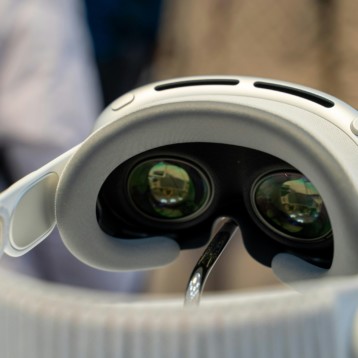The Stride Management Assist device straps on around a user’s waist and thighs. It monitors the user’s hip angles while he walks to calculate the optimal stride length for ease of walking and forces the wearer to use that stride. The device weighs about 5 pounds and can operate for about two hours at a time using a Lithium Ion rechargeable battery. It uses brushless motors to minimize weight and is currently available in three sizes to meet the needs of various body shapes.
The Bodyweight Support Assist device is a more extensive device that actually supports some of the wearer’s weight, partially removing the burden from their own body (in particular, it reduces the load on the user’s hips, knees, and ankles). The device doesn’t strap on, but rather is donned by wearing a special pair of shoes attached to an extensive exoskeletal device with an actual seat that resides between the wearer’s legs at all times. It, too, runs on a rechargeable Lithium Ion battery. Because of the need to follow the entire lower body of the user, there are more size restrictions to the Bodyweight Support Assist device than the Stride Management Assist; users must be within 5 centimeters of the expected height assigned to each of the three available sizes.
Both devices are based on designs and concepts first tested in Honda’s ASIMO humanoid robot. ASIMO was designed to be as human-like as possible, performing a variety of common tasks. Developing systems that could perform and control continuous motion walking with changes of direction and obstacle avoidance was complex; much of that technology was later incorporated into Honda’s assistance devices.
Honda is currently testing the Stride Management System in conjunction with the Shinseikai Medical Group at Kasumigaseki-Minami Hospital in Kawagoe, Japan. Patients in the rehabilitation programs there are trying the device and providing feedback, as are their physical therapists and doctors. Both devices are also being showcased at various relevant trade shows including the aforementioned Society of Automotive Engineers World Congress, at which they were first revealed to the American public.
TFOT has previously reported on other assistive technologies including the Hybrid Assistive Limb (HAL) robot suit designed to help paralyzed people walk again, a personalized user interface that adopts itself to the specific visual and motor abilities of its users, the potential for mind-controlled bionic limbs as a replacement for current prosthetic devices, a system designed to control mouse movement using eye movements, and the COGAIN gaming system that allows users to control gaming functions with eye movements.
Read more about the Stride Management Assist and the Bodyweight Support Assist devices in this Honda Worldwide press release and the Walking Assist section of Honda’s website.










